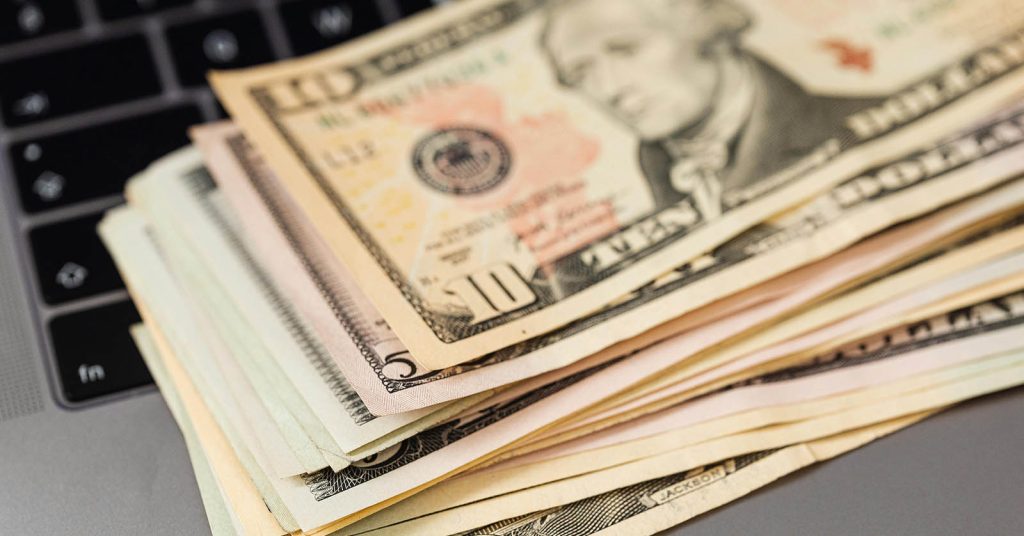An emergency fund is the buffer between an unexpected bill and expensive debt. It turns bad luck into an inconvenience instead of a crisis. U.S. consumer-finance guidance consistently recommends starting small, then building toward a few months of living costs, but the “right” number depends on your income stability, dependents, housing and healthcare risks, and how quickly you could cut expenses. The Consumer Financial Protection Bureau (CFPB) emphasizes practical beginnings: even a modest balance reduces stress and helps you avoid late fees or high-APR credit when life happens. Where you keep the money matters too, because safety, access, and interest are not identical across savings accounts, money market deposit accounts, certificates of deposit (CDs), and U.S. savings bonds. FDIC and NCUA rules protect bank and credit-union deposits up to $250,000 per depositor, per insured institution, per ownership category, which is plenty for most households but worth structuring correctly if your fund grows. CDs can improve yield for the “deeper” portion of your fund, but early withdrawals can cost months of interest unless you choose no-penalty products or ladder maturities. Series I savings bonds add inflation protection for a slice of long-term reserves, yet they lock funds for the first year and cap purchases annually. Learn how much to hold, where each “layer” belongs, and how to build the fund in 30 days — with clarity on insurance and penalties.
Key Takeaways
- Start now, then scale: Any amount helps; aim for one month of expenses, then three to six as your stability improves.
- Use insured accounts: HYSA/MMDA for quick access; layer CDs or I bonds only for the “deep” portion.
- Know the fine print: CD early withdrawals usually cost 90–365 days of interest; I bonds can’t be cashed in year one.
- Structure coverage: FDIC/NCUA insure $250,000 per depositor, per institution, per ownership category — mix categories if needed.
How Much Should You Save? (Right-Sized Targets for Real Life)
Set a target you can reach in phases, because momentum beats perfection. For most households, a starter goal is $500–$1,000, which covers many common shocks without a credit-card scramble; once that’s in place, aim for one month of essential expenses. Essentials mean rent or mortgage, utilities, groceries, insurance, transportation, minimum debt payments, and critical care. After one month, move toward three months if you have dual steady incomes and solid insurance, or toward six months if you have one income, variable pay, dependents, or a specialized job market. Households with very stable employment and access to flexible credit may hold less cash, but they should be honest about the risk of job gaps or medical bills. The CFPB’s emergency-savings guidance encourages tailoring the number to your own shock history and bills, not a generic rule; past surprises are a good predictor of future needs. If irregular income makes a monthly target fuzzy, budget per paycheck and park anything past essentials in the fund until you average your last three months. Remember that “months of expenses” shrink if you’re willing to enact a bare-bones budget temporarily. Finally, don’t let the perfect number stall action; a small, reachable goal that you hit this month beats a six-month target you abandon.
Where to Keep It: Safety, Access, Yield (and What’s Insured)
Your emergency fund must be safe first, accessible second, and rewarded third. High-yield savings accounts (HYSAs) at FDIC-insured banks or money market deposit accounts (MMDAs) at banks/credit unions are ideal for your first 1–2 months of expenses because they combine insurance with same-day or next-day access. Deposit insurance from the FDIC (banks) and NCUA (credit unions) covers up to $250,000 per depositor, per insured institution, per ownership category, which means many families can protect their full fund without complexity; confirm your bank/credit union is insured and your account type is eligible. For the next “deeper” layer of reserves, some savers ladder certificates of deposit (CDs) for a bit more yield, but it’s crucial to understand early withdrawal penalties; typical penalties range from roughly 90 to 365 days of interest depending on term and bank policy, and in rare cases can encroach on principal if rates are low and terms are long. You can mitigate that risk by choosing no-penalty CDs or by keeping only part of the fund in term deposits. A niche option for the longest-horizon slice is Series I savings bonds bought at TreasuryDirect; they are backed by the U.S. government with an inflation-linked composite rate, but they are illiquid for 12 months and forfeit three months’ interest if redeemed before five years, with annual purchase limits per person. Investments like stock mutual funds are not deposit-insured and can drop when you need cash, which defeats the purpose of a guaranteed buffer. Tactically, many households split the fund: two months in HYSA/MMDA, two to four in CDs or a second HYSA, and optional I bonds for long-tail resilience if you can lock a portion for at least a year. The table below summarizes the trade-offs so you can match accounts to purpose.
| Account type | Best use | Access | Insurance | Key gotchas |
|---|---|---|---|---|
| HYSA / MMDA | First 1–2 months of expenses | Same/next day transfers; ATM in some cases | FDIC or NCUA up to $250k per depositor/category | Rate can change; verify the institution is insured |
| CD (incl. no-penalty) | Deeper layer you rarely touch | Term-bound; no-penalty allows early withdrawal | FDIC/NCUA if issued by insured institution | Typical penalty 90–365 days of interest; read terms |
| Series I savings bonds | Long-tail reserve, inflation link | Locked 12 months; 3-month interest penalty if < 5 yrs | U.S. govt. backed (not FDIC); bought at TreasuryDirect | $10k annual purchase limit per person; website UX quirks |
Coverage rules and penalties summarized from FDIC/NCUA and product guidance.
Make Your Money Truly “Insured”: FDIC/NCUA in Plain Terms
Insurance coverage hinges on institution and ownership category, not just the number on your statement. The FDIC standard insurance amount is $250,000 per depositor, per insured bank, per ownership category; categories include single, joint, certain retirement (like IRAs at banks), revocable trusts, and more. NCUA provides comparable coverage for credit-union deposits via the Share Insurance Fund, and it similarly recognizes separate categories (for example, individual, joint, certain retirement), with separate rules for trust accounts that the agency updated in 2024–2026 guidance. If you hold more than $250,000 in one bank under a single ownership category, you can increase coverage by spreading funds across insured banks or by using different ownership categories appropriately. Joint accounts generally provide each co-owner with up to $250,000 in coverage for their share at the same institution, effectively increasing the insured total. Brokered CDs can also diversify coverage because each CD sits at a different underlying bank, though you should still confirm the issuing bank is FDIC-insured and track totals by category. FDIC and NCUA both publish consumer brochures and calculators that walk you through scenarios; using them is smart once your combined balances approach limits. Remember that securities (stocks, bond funds, crypto) and the contents of safe-deposit boxes are not FDIC/NCUA-insured; only qualifying deposit accounts and CDs are. When in doubt, verify the bank’s FDIC certificate or the credit union’s NCUA status and keep beneficiary designations and titling clean to avoid coverage surprises.
Build It in 30 Days: A Realistic, Repeatable Plan
Week 1, list essentials and set a starter goal you can hit this month — say $500 or one week of expenses — and open or confirm an FDIC/NCUA-insured HYSA as the home base. Week 1, also automate a small transfer the day after payday so saving happens without willpower; add roundup or paycheck-skimming features if your bank offers them.
Week 2, harvest “easy wins” by canceling unused subscriptions, negotiating a bill, or selling one item; move those proceeds to the HYSA the same day so the win becomes visible. Week 2, set up direct deposit split if your employer supports it, sending a fixed amount or percentage straight to the HYSA before it hits checking.
Week 3, create a sinking fund line for the next predictable but irregular expense — car tags, insurance premiums, travel — so those costs stop ambushing your emergency fund. Week 3, if you already have one to two months saved, consider laddering a small slice into a short CD or a no-penalty CD to improve yield without sacrificing flexibility.
Week 4, stress-test access: link an external checking account and execute a small test transfer to confirm timing; in a crisis, you need to know if “instant” means minutes or next business day. Week 4, write simple rules for when you’ll tap the fund (job loss, medical, urgent home/transport repairs) and when you won’t (vacations, planned upgrades); clarity prevents erosion.
End of month, review the balance, reset next month’s automated transfer slightly higher if cash flow allows, and record any changes to insurance titling or beneficiaries. Repeat this cycle quarterly until you reach your target months of expenses, then revisit the mix between HYSA/CDs/I bonds to match your risk and access preferences.
Advanced Setup: Layered (Tiered) Emergency Funds
A tiered structure balances access and yield by matching account type to how frequently you expect to tap it.
Tier 1 holds the first month of expenses in a HYSA/MMDA for immediate use; transfers are fast, the balance is insured, and the rate floats with the market.
Tier 2 covers months two to four; many savers split this between the same HYSA and one or more short CDs, selecting at least one no-penalty CD so they can break it without fees if needed.
Tier 3 is optional for long-tail shocks; some choose I bonds for inflation protection, understanding the one-year lock and the three-month interest penalty before year five, while others simply keep a second HYSA at a different insured institution to diversify operational risk. When rates fall, CDs may lag downward, which can be a benefit; when rates rise, HYSAs adjust more quickly, which helps Tier 1 keep up. If you manage balances near insurance limits, split tiers across insured institutions or categories for clean coverage math. This structure also helps psychologically: you’re less tempted to raid Tier 3 for non-emergencies because access is slower by design. Rebalance once or twice a year so Tier 1 stays at one month and Tier 2 remains right-sized for your job and family situation. Finally, document your tiers for a spouse or partner so anyone can navigate a crisis without hunting for account details.
When to Use It (and How to Refill It Fast)
Use your fund for events that are necessary, unexpected, and urgent, not for planned purchases or lifestyle upgrades. Obvious triggers include job loss, medical bills, urgent travel for family, essential car repairs, or emergency home fixes that prevent bigger damage. If the expense is predictable and recurring — holidays, insurance premiums, back-to-school — treat it as a sinking fund item and save ahead so your emergency cash isn’t drained by “expected surprises.” When you tap the fund, write a brief note (what, when, how much) and set an automatic replenishment plan immediately, even if small; inertia is the enemy of rebuilding. If you must break a CD, first check the penalty math and compare it to alternatives; sometimes a 90-day interest cost is cheaper than carrying high-APR credit for months. If an emergency exceeds Tier 1, pull from Tier 2 in sequence and leave Tier 3 untouched if the crisis is likely short-lived. After the event, review root causes and adjust insurance, maintenance, or buffers to reduce repeat shocks. If you’re consistently dipping for non-emergencies, your budget needs a wants/irregulars reset rather than a larger emergency fund. Finally, celebrate small rebuild milestones; positive feedback makes the habit stick.
Common Mistakes (and How to Avoid Them)
The first mistake is waiting to start until you can save “three months” all at once; small balances still prevent fees and stress today. The second is mixing emergency cash with general checking; create a separate HYSA so you see progress and avoid accidental spending. The third is chasing yield with uninsured or volatile products; emergencies do not schedule themselves around market dips. The fourth is ignoring early-withdrawal penalties on CDs; always choose no-penalty CDs or keep most of the fund liquid if you’re early in the process. The fifth is failing to structure deposit-insurance coverage when balances grow; a single $300,000 balance at one bank, one category can exceed coverage, while simple category or bank splits can fully insure you. The sixth is locking too much in illiquid vehicles; I bonds are powerful inflation hedges, but the one-year lock makes them inappropriate for Tier-1 needs. The seventh is never stress-testing transfers; know exactly how fast you can move money on weekends and holidays. The eighth is treating every large bill as an “emergency” instead of building sinking funds for predictable costs. The ninth is forgetting to update beneficiary designations and account titles after life events, which can affect both access and insurance category treatment. The tenth is over-funding cash far beyond your real risk tolerance; after your target, direct surplus to debt payoff or long-term investing so inflation and opportunity cost don’t quietly erode wealth.
Frequently Asked Questions (FAQs)
How much is “enough” for most people?
Start with $500–$1,000, then one month of essentials, then build toward three to six months depending on job stability, dependents, and insurance. The CFPB recommends tailoring the number to your situation and beginning with manageable goals so you build confidence.
What exactly is insured — and what isn’t?
FDIC/NCUA insure qualifying deposit accounts (checking, savings, MMDAs, and CDs) up to $250,000 per depositor, per insured institution, per ownership category. Securities such as stocks, bonds, mutual funds, and crypto are not insured by FDIC/NCUA, nor are the contents of safe-deposit boxes. U.S. Savings Bonds (like I bonds) are backed by the government but aren’t FDIC/NCUA products.
Are CDs safe for emergency money?
They’re safe when issued by insured institutions, but access is limited. Early withdrawals typically cost 90–365 days of interest, so keep only a portion of the fund in CDs or choose no-penalty CDs to reduce the risk of fees if you need cash quickly.
Should I use I bonds?
I bonds can hedge inflation for the deepest layer of your fund, but they’re locked for 12 months and have a three-month interest penalty if redeemed within five years. Annual purchase limits apply (generally $10,000 per person in electronic bonds). They’re best for money you are confident you won’t need in the first year.
What if rates change?
HYSAs and MMDAs adjust rates over time; CDs lock a rate, which can help if rates fall but can lag if rates rise. Review your tiers annually and rebalance between liquid accounts and CDs based on your access needs and the interest-rate environment.
Sources
- CFPB — An essential guide to building an emergency fund
- FDIC — Understanding deposit insurance ($250k per depositor/category)
- FDIC — Your Insured Deposits (what’s covered vs not)
- NCUA — Share Insurance Coverage (credit unions $250k and categories)
- NCUA — FAQ on Share Insurance (category nuances)
- Bankrate — Early withdrawal penalties (90–365 days interest typical)
- Bankrate — Avoiding CD penalties (no-penalty, ladders)
- NerdWallet — CD early withdrawal fees (how they’re calculated)
- U.S. Treasury — TreasuryDirect Research Center (I bond purchase limits)
- Kiplinger — What are I-Bonds? Current rules & penalties









